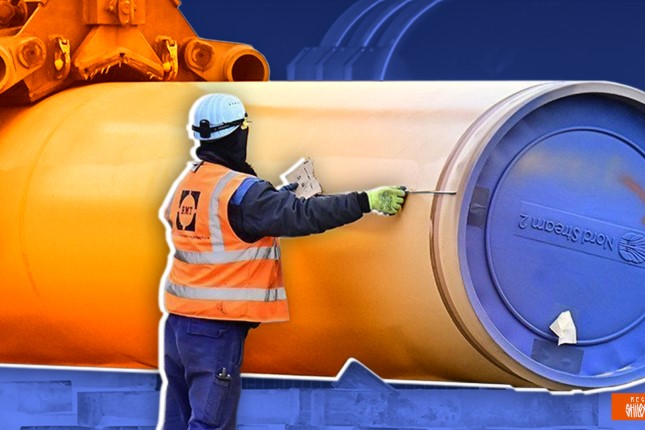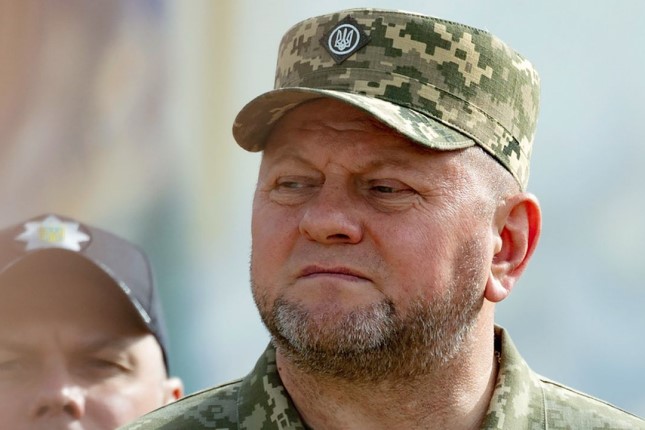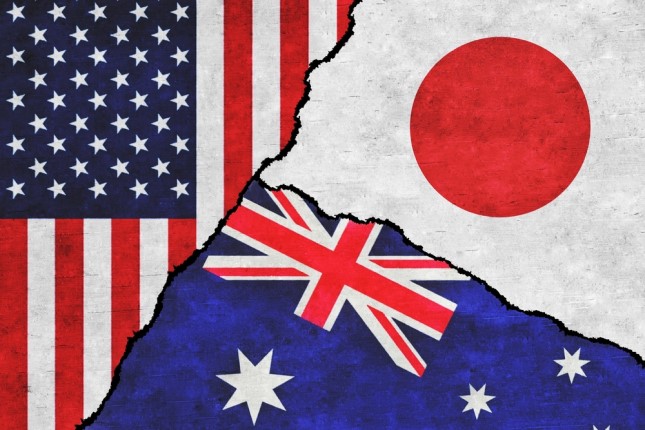The year 2022 was a clear testament that the gas market is, above all, a very much "alive" and fluid system rather than a dull set of long-established and rusting bilateral economic relations. Second of all, it is truly global, not only in terms of being able to communicate price signals between Europe, Asia and North America but also in terms of maintaining the physical balance between supply and demand. We could see, for example, how a surge in demand for LNG in Europe led to its hidden shortage in Asia or, conversely (depending on the observer's perspective), how weak demand in Asia helped free up available LNG so it could be shipped to Europe hassle-free.
Trading without partnerships
Just a year ago, experts and politicians alike were forecasting confidently that it would take the EU at least 15 to 20 years before it could wean itself off of Russian gas and that it would be a gradual and slow process. But it turned out that with enough political will and willingness to turn a blind eye to economic consequences, this could, in fact, be done in less than six months. And it doesn't even matter who is at fault here. What is important is that what has transpired is irreversible for both sides.
International gas trade, and especially pipeline gas trade, known for its propensity for building particularly rigid links between the seller and the buyer, is rarely just a trade-based relationship. Instead, it becomes overgrown by a complex and multifaceted ecosystem of strategic partnerships (the most notable examples include the relations between Canada and the US, Norway, the UK and the EU, or Russia and China). The EU countries and Russia had spent half a century building such an ecosystem since the late 1960s, and they have indeed succeeded in their endeavors.
Otherwise, it would have been impossible to give a proper explanation to the fact that in 2021 the share of Russian gas in the EU's overall gas consumption was as high as 45%. What is behind this number is the parties' great and absolute trust in each other.
This mutual trust was shuttered in 2022. Having been left outside a strategic partnership arrangement, this large-scale gas trade system was doomed to crumble.
At the current level of trade with Europe (not counting supplies to Serbia that are hovering over around 60 to 70 million cubic meters per day), total exports of Russian pipeline gas to the EU in 2023 will be at about 25 billion cubic meters compared to 141 billion in 2021, representing a greater than five-fold drop.
Assuming more favourable conditions and provided the bilateral relations between Russia and the EU could be fully normalized, gas supplies could probably rebound to 60 to 70 billion cubic meters, although that alone would take a tremendous amount of effort, including costly repairs of at least one of the Nord Stream 1 lines and going back to using the Yamal-Europe gas pipeline.
A potential volume of 40 to 50 billion cubic meters per year thus seems somewhat more realistic. And, of course, there is no guarantee that this would even become possible in 2023. For now, at least, this is not the baseline assumption.
A Recipe for Substitution
The recipe for the EU successfully "weaning" itself off of Russian pipeline gas is rather complicated and can hardly be replicated anywhere or by anyone else. It is based on the EU's willingness to withstand a multi-year period of extremely high prices in the hope that that would help kill two birds with one stone: discourage demand (according to preliminary data, between August and November 2022, the demand fell by 20.1% compared to average five-year figures) while attracting new supply to the market.
This supply will consist primarily of LNG (+70.5% for 11 months year-on-year), but not exclusively: growing pipeline gas supplies from Norway and Azerbaijan will be outstripping earlier expectations. Algeria, too, will keep trying to maintain its exports at last year's high levels. Gas flows from the UK to the EU have jumped up severalfold.
All of this is happening against the backdrop of surprisingly favorable weather conditions that have set in since last September. The heating season started unusually late, as late as November 14, but even after that, "standard" winter weather was only observed at the very end of November and in the first half of December. It came to a point where on December 24-26, the European Union's underground gas storage facilities had to switch to a mode of predominantly pumping the gas in, which is an extremely rare occurrence for this season.
The average annual TTF prices in the 2010s were in the range between USD 160 and USD 380 per thousand cubic meters. In 2021 they reached nearly USD 560, and in 2022 they soared another 2.5 times to about USD 1,340 (there was briefly a period when daily prices were as high as USD 3,600, but that was very short-lived).
Next year, the average annual price is expected to be at the level of around USD 1,250 to 1,450, depending on the situation on the market. It is unlikely that gas prices in Europe would be able to go back to their 2010s levels before the end of this decade, nor is it highly likely that they will be able to sink below USD 1,000 earlier than 2025.
A fragile balance
That said, daily prices have been fluctuating in a way that would be unimaginable in most other commodity markets. From late August to November 1,2022, TTF spot prices fell 16-fold, and by early December, they climbed back up again more than seven-fold. Such price volatility is hardly a sign of a healthy market, but they are a fair indicator of the fragility of the current gas balance and the overall sense of nervousness, which, despite things getting somewhat calmer, has not really gone anywhere.
It is true, though, that the overt panic that swept the market between May and September 2022 is no longer there. But there are no new sources of gas either. The years 2023 and 2024 represent the low point of the investment cycle in the world LNG sector, with very few new facilities expected to be commissioned during this period, and even then, they will be unable to fully offset the increase in demand from other regions. While the situation could be improved somewhat by the expected restart of the Freeport LNG plant, where operations had been suspended for seven months, there is still no guarantee that the EU and the UK will be able to increase their LNG imports in 2023 and 2024 beyond 2022 levels.
Pipeline gas supplies from all sources other than Russia have also reached their peak. The EU's own gas production fell by 8.2% year-on-year between January and September 2022. The Netherlands accounting for more than 40% of the EU's gas production saw its production fall by 14.8% year-on-year in the first 11 months of 2022.
This means that any further increase in gas supplies in 2023 could be made possible primarily by way of "poaching" additional LNG cargoes, which is something that will not at all be easy to pull off, given the projected growth in demand in Asia. There is no reason to count on any significant volumes here. The second possible solution would be to reinstate partial imports of Russian gas to Europe's North West and to Central European countries, but this is something that is far from a done deal. As a result, the overall gas balance may worsen even further due to the partial recovery of demand, especially if the prices in the year's first half continue to remain relatively low (they dropped below USD 900 per one thousand cubic meters at the end of December).
All in all, there are no credible grounds for suggesting that Europe will "freeze up" in the coming months or even years: there is no question of whether there will be enough gas, and the very likelihood of gas shortages arising in the future has diminished considerably. But the extraordinary economic costs manifested by high gas prices will remain a certainty, especially if the European Commission fails to implement its plan to decouple wholesale electricity prices from gas prices. While gas only accounts for about 19% of the EU's overall power generation, the cost of buying gas did, in fact, drive the prices of overall power generation in 2022.
Price games
The introduction of a "price cap" on futures traded on the TTF and at other hubs sends a very ambiguous signal to the market.
On the one hand, the EU countries have all but officially recognized as a new temporary "normal" price level of around USD 2,000 per one thousand cubic meters, whereas previously any price increase above USD 500 to USD 600 seemed excessively high, especially during summer.
On the other hand, this decision could be encouraging a potential gap between spot prices (which are not subject to these restrictions) and futures prices, as well as the outflow of some of the capital from the TTF to the NBP and, possibly, to other European hubs if the European Commission chooses to make an exception for them (it has reserved such a right).
This would undermine the time-honored pricing mechanisms in the EU market and make exchange indices less representative. On a broader scale, this will cast doubts on exchange indices as the perfect pricing mechanisms, something the EU has been advocating for the last two decades.
However, it is unlikely that this will serve to help achieve the ultimate objective of keeping gas prices under USD 2,000: in 2023, spot market prices may rise considerably higher, and the same is true for OTC contracts as they will not be driven by the "cap" but rather by the actual interplay between supply and demand.
Elsewhere on the planet, the year 2022 will obviously spawn a crisis of spot trading something that has enjoyed rapid growth on the LNG market over the recent years.
The LNG markets
The global LNG supply had been obviously unprepared for such a sudden and sharp increase in demand from Europe. This was simply not accounted for in companies' investment plans. But the market has been able to adapt fairly quickly, although it had to be working very close to the top of its capacity. According to preliminary assessments, in 2022, the average utilization rate of liquefaction capacities all over the world reached an unprecedented 94%, although normally, this number fluctuates between 80% and 90%.
All of this was happening amid stagnating demand for gas in Asia caused primarily by Asian consumers' unwillingness to compete with European buyers on price. But the recent lockdowns in China and relatively favorable weather conditions, especially at the beginning of the year, have also played their role. After zero growth in 2022, the IEA expects gas demand in the APAC to increase by 3.1% year-on-year in 2023. Africa and the Middle East may enjoy a roughly similar growth in demand. This factor will further exacerbate the shortage of LNG on the world market that the forced suppression of demand had hidden due to the fact that many consumers found the new prices flat-out unaffordable.
Growing LNG supply over the next three to four years will be able to offset the current imbalance. Moreover, there is a considerable risk of overinvestment in new liquefaction capacity that could potentially result in considerable oversupply starting as early as 2026.
However, the demand side's long-term response to the 2022 crisis seems to be a much serious concern to worry about. Europe's situation aside, most of the growth in both LNG and general gas consumption worldwide generally occurs at the expense of either relatively low-income countries (such as Pakistan and Bangladesh) or as the result of a policy of managed demand manifested in the state's ability and willingness to stem or increase its growth depending on the situation with domestic production, the overall fuel and energy balance, the degree of achievement of low-carbon objectives, etc.
Quite often, this is a matter of concern for the same groups of countries. The effect the 2022 price shock could have on them may be comparable to the oil shocks of the 1970s felt in the developed countries, causing them to drastically reduce the economic attractiveness of natural gas and reconsider its role in the "energy transition" process.































